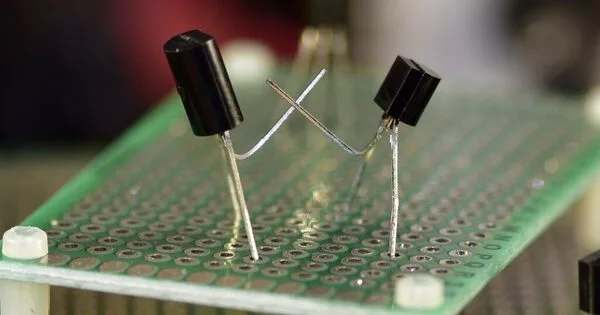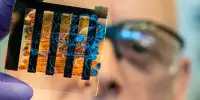Researchers have created a highly efficient organic bipolar transistor. The research opens up new avenues for organic electronics, including data processing and transmission, as well as medical technology applications.
Prof. Karl Leo has been thinking about the realization of this component for more than 20 years, and it is now a reality: his research group at the Institute for Applied Physics at the TU Dresden has presented the first highly efficient organic bipolar transistor. This opens up entirely new possibilities for organic electronics, both in data processing and transmission and in medical technology applications. The findings of the study have now been published in the leading specialist journal Nature.
Shockley, Bardeen, and Brattain at Bell Laboratories invented the transistor in 1947, ushering in the age of microelectronics and revolutionizing our lives. Bipolar transistors, in which negative and positive charge carriers contribute to current transport, were invented first, and unipolar field-effect transistors were added later. The increasing performance of silicon electronics due to scaling in the nanometer range has greatly accelerated data processing. This very rigid technology, however, is less suitable for new types of flexible electronic components, such as rollable TV displays, or for medical applications on or in the body.
We’ve been thinking about this device for 20 years, and I’m overjoyed that we can finally show it off with the novel highly ordered layers. Because they enable demanding tasks in data processing and transmission, the organic bipolar transistor and its potential open up completely new avenues for organic electronics.
Prof. Karl Leo
Transistors made of organic, i.e. carbon-based semiconductors, have recently gained attention for such applications. Organic field-effect transistors were first introduced in 1986, but their performance still lags far behind that of silicon components.
Prof. Karl Leo and Dr. Hans Kleemann of the Technical University of Dresden have demonstrated an organic, highly efficient bipolar transistor for the first time. The use of highly ordered thin organic layers was critical in this. This new technology is many times faster than previous organic transistors, and for the first time, the components have reached operating frequencies in the gigahertz range, i.e. more than a billion switching operations per second.
Dr Shu-Jen Wang, who co-led the project with Dr. Michael Sawatzki, explains: “The first realization of the organic bipolar transistor was a great challenge since we had to create layers of very high quality and new structures. However, the excellent parameters of the component reward these efforts!”

Prof. Karl Leo continues, saying: “We’ve been thinking about this device for 20 years, and I’m overjoyed that we can finally show it off with the novel highly ordered layers. Because they enable demanding tasks in data processing and transmission, the organic bipolar transistor and its potential open up completely new avenues for organic electronics.” Future applications that can be imagined include intelligent patches outfitted with sensors that process sensor data locally and wirelessly communicate with the outside world.
Field-effect transistors and bipolar transistors are the two main types of transistors. The majority of transistors are made of inorganic material, most commonly silicon. Researchers have been investigating the use of organic materials to build transistors — which could create flexible or transparent systems — for decades, but only field-effect transistors have been successfully ported to the new set of materials.
“High mobilities [of charge carriers] are easy to achieve in inorganic materials such as silicon, but more difficult in organic materials. Nonetheless, since the first fabrication of an organic transistor, an organic solar cell, and an organic light-emitting diode in the 1980s, tremendous progress has been made in the field of organic electronics, particularly in the OLED display industry “Julie Euvrard and Barry Rand of Princeton University’s Department of Electrical and Computer Engineering elaborated.
“Organic bipolar junction transistors have never been attempted before because charge carrier mobility in organic semiconductors is lower than in inorganic semiconductors,” they explained.
















